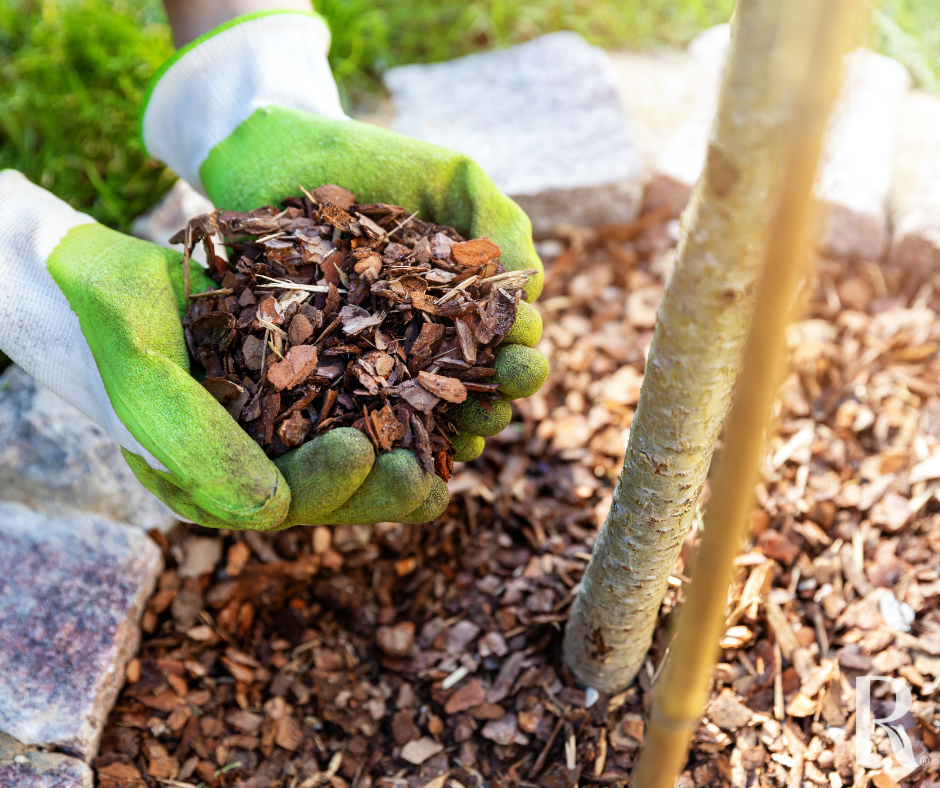Mulches such as Pine bark, cypress, tea tree, wood chip and hoop pine are what we class as high carbon, meaning that they have higher levels of carbon compared with mulches such as, sugar cane, pea-straw and lucerne.
Pros:
- They last longer meaning they won’t need replacing/topping up every few months.
- Cost effective because of their longevity.
- Attractive and neat. Darker colours available.
- Less likely to be eroded by wind or heavy rainfall.
- Cypress and Tea Tree Mulch can be termite repelling, a property from their natural oils.
Cons:
- Labour intensive on seasonal gardens. If you are using it on a seasonal flower or vegetable garden you will have to scrape it all back to add more compost, manure, and other types of organic matter before planting the next seasons crops and flowers, to then push the mulch back into place.
- Nitrogen drawdown can occur.
- Termites when using wood chip type mulches – stick to tea tree and cypress which are termite repellent.
- Density of mulch can make it hard for water to penetrate and reach plant roots.
What is Nitrogen drawdown?
Nitrogen drawdown occurs when you put woody materials and mulches such as pine bark, cypress, tea tree and woodchip onto the soil surface. Soil micro-organisms, fungi and bacteria will actively start composting mulches as soon as they are laid. For these microbes to do that, they need to draw nutrients out of the soil. This is called nitrogen drawdown, because nitrogen is the major nutrient, they need to consume to help give them the energy to break down high carbon mulches. This results in a competition for nutrients between plant roots in the soil and the mulch that's sitting on top of it.
Nitrogen drawdown is the loss of nitrogen to plants in the presence of high amounts of carbon, resulting in slower growth and in extreme cases, deficiencies.
How to combat Nitrogen drawdown.
- Remove any mulch already present.
- Apply a 1–2-centimetre layer of Rocky Point Cow Manure Plus, ActivGrow Soil Improver, or Blood & Bone or a Poultry Manure pelletised fertiliser.
- Then reapply mulch, water in well.
- This is providing a barrier between the mulch and soil with something that has already been decomposed and has good levels of nitrogen to feed hungry soil microbes.
Looking for more great gardening info like this? Subscribe to the Better Earth Program to receive Better Earth Secrets Magazine direct to your inbox each season.
_MEB.png?width=842&height=596&name=RP_HorizontalColour(R)_MEB.png)



